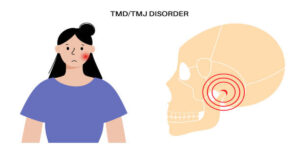The phrase “none of this is true” has a deceptively simple structure, but its implications stretch far beyond everyday speech. It can serve as a personal defense mechanism, a skeptical remark about a statement, a philosophical puzzle, or even a dramatic literary device. At its core, it challenges the listener to question the very foundation of reality, belief, and communication. Truth itself is not always as straightforward as it seems; in many cases, the lines blur between fact, interpretation, and outright fabrication. Understanding why people say “none of this is true” requires delving into human cognition, language, psychology, and even ethics.
The moment someone hears that nothing in a certain statement is true, they are thrown into a mental state where they must decide whether they believe the speaker, question their own assumptions, or demand further evidence. The uncertainty generated by such a phrase can either promote deeper investigation or shut down further discussion. This duality makes the phrase both a powerful rhetorical tool and a dangerous one, depending on how it is used.
1. The Nature of Truth and Falsity
Truth has been defined in various ways by philosophers, scientists, and theologians throughout history. In the correspondence theory of truth, a statement is considered true if it aligns with objective reality. In the coherence theory, truth is seen as the consistency of a statement with a set of beliefs or propositions. The pragmatic theory, on the other hand, holds that truth is whatever works effectively in practice. When someone asserts “none of this is true”, they are effectively rejecting the truth of every component in a given set of statements, regardless of which theory one applies.
The difficulty lies in the fact that “truth” is rarely absolute in everyday discourse. For instance, historical accounts may be based on partial evidence, eyewitness memories can be unreliable, and even scientific findings evolve with new data. In this sense, “none of this is true” may be an overstatement when reality is actually a blend of truth and error.
| Theory of Truth | Definition | Implication for “None of This Is True” |
|---|---|---|
| Correspondence | Truth matches reality | The phrase means every claim fails to reflect reality. |
| Coherence | Truth aligns with belief systems | The phrase rejects compatibility with any accepted belief network. |
| Pragmatic | Truth works in practical application | The phrase means nothing in the claim is useful or functional. |
2. Psychological Dimensions of Denying Truth
From a psychological perspective, denying the truth can serve multiple purposes, some conscious and others unconscious. In the context of “none of this is true”, there may be defensive motives, such as avoiding accountability, protecting self-image, or reducing cognitive dissonance.
Cognitive dissonance occurs when an individual holds conflicting beliefs or when evidence contradicts an existing belief. Instead of confronting the discomfort head-on, a person might reject the entire narrative by saying it is all false. This tactic removes the need to dissect individual claims, instead painting the entire matter as unworthy of belief.
Additionally, denial can be a coping strategy during trauma. For someone facing overwhelming or emotionally damaging information, declaring “none of this is true” can temporarily shield them from emotional harm. However, prolonged reliance on this defense can hinder personal growth and problem-solving.
3. Philosophical Paradoxes and Logical Challenges
One fascinating angle on “none of this is true” comes from logic and philosophy of language. The phrase echoes the liar paradox, where a statement refers to its own falsity. For example, if someone says, “This statement is false,” and it is indeed false, then it must be true—creating a loop of contradiction.
In some contexts, “none of this is true” might be self-referential, especially if the statement itself is part of the “this” being denied. This raises questions about self-reference, logical consistency, and the limits of language. Philosophers from Epimenides to Alfred Tarski have grappled with these puzzles, revealing that truth is not merely a property of statements but also a product of the frameworks we use to interpret them.
4. Cultural and Social Uses of the Phrase
In social interactions, “none of this is true” can be used both sincerely and sarcastically. In debates, it may signal complete disagreement with an opponent’s argument. In satire or fiction, it may serve as a playful hint to the audience that they are entering a world of make-believe.
Different cultures also have varying tolerance levels for absolute truth denial. In some societies, making such a sweeping denial could be seen as rude or confrontational, whereas in others it might be considered a standard part of spirited debate. The cultural context can drastically alter how the phrase is received and whether it sparks curiosity or conflict.
5. The Role of Evidence in Truth Claims
When someone hears “none of this is true”, a natural response is to ask, “What evidence supports that?” The interplay between claims and evidence is central to rational discourse. In science, for example, evidence is collected through observation and experimentation, then evaluated against hypotheses. In journalism, claims are fact-checked against reliable sources.
If no evidence is offered, the denial risks being dismissed as an opinion rather than a reasoned argument. On the other hand, if strong counter-evidence is presented, the denial might lead to the correction of false beliefs. The danger lies in cases where people accept denials without demanding proof, creating fertile ground for misinformation and manipulation.
| Type of Claim | Evidence Needed for Rebuttal | Impact of “None of This Is True” |
|---|---|---|
| Scientific finding | Peer-reviewed contradictory studies | May trigger re-evaluation of theories |
| News report | Verified contradictory documentation | Could expose misinformation or bias |
| Personal account | Inconsistencies, independent witnesses | May lead to doubt or skepticism |
6. Misinformation and Disinformation
In the modern age of social media and rapid information spread, the phrase “none of this is true” often appears in the context of countering misinformation. However, it can also be weaponized as part of disinformation campaigns. Misinformation refers to false information spread without intent to deceive, while disinformation involves deliberate deception.
When truth and falsehood are mixed together, outright denial may oversimplify reality. In fact, some disinformation strategies rely on encouraging people to distrust all sources equally, leading them to conclude that no information is reliable. This phenomenon is sometimes called the “firehose of falsehood” approach, where overwhelming amounts of conflicting information lead to paralysis of judgment.
7. Ethical Considerations in Declaring Something False
From an ethical standpoint, making the sweeping claim that nothing is true in a given statement carries responsibility. If the denial is baseless, it risks damaging reputations, undermining trust, and spreading cynicism. Ethical communication requires both honesty and precision, meaning that if parts of a statement are true, those parts should be acknowledged rather than dismissed wholesale.
For example, in a court of law, witnesses are asked to tell “the truth, the whole truth, and nothing but the truth.” This phrasing emphasizes that omitting truths or mixing them with falsehoods can distort reality just as much as outright lying.
8. Practical Strategies for Responding to “None of This Is True”
When confronted with this phrase, critical thinking becomes essential. The following steps can help navigate the situation:
- Clarify the scope – Ask what specifically is being denied.
- Request evidence – Find out why the speaker believes everything is false.
- Separate claims – Break down the original statement into smaller parts to test individually.
- Check independent sources – Compare the claims with reliable, unrelated evidence.
- Avoid emotional escalation – Focus on facts and logic rather than turning the discussion into a personal conflict.
9. Why the Phrase Endures in Human Communication
Ultimately, “none of this is true” survives as a common phrase because it is efficient, powerful, and adaptable. It allows people to express total rejection without going into detail, which can be advantageous in fast-paced debates or emotionally charged discussions. However, its efficiency comes at the cost of nuance, and its power can be misused.
In a world where truth is increasingly contested, learning to handle this phrase with intellectual rigor is essential. Whether we are in a courtroom, a classroom, or a casual conversation, the ability to parse truth from falsehood remains one of the most vital skills of modern life.
ALSO READ: Never Attribute to Malice – A Complete Guide to Hanlon’s Razor
Table: Key Takeaways About “None of This Is True”
| Aspect | Explanation |
|---|---|
| Meaning | A total denial of the truth of a statement or set of statements. |
| Psychological Function | Can serve as a defense mechanism or a tool for avoiding cognitive dissonance. |
| Philosophical Implication | Raises questions about truth, falsity, and logical consistency. |
| Risk | Oversimplifies complex realities, may spread distrust or misinformation. |
| Best Response | Clarify, request evidence, and evaluate claims individually. |
FAQs
Q1: What does “none of this is true” actually mean?
It’s a blanket denial indicating that every part of a certain statement is claimed to be false. It does not differentiate between partially true and wholly false elements.
Q2: Is “none of this is true” always accurate?
Not necessarily. Many claims contain a mix of truth and falsehood, so such a sweeping statement may oversimplify complex situations.
Q3: Why do people say “none of this is true” without evidence?
Sometimes it’s emotional reaction, sometimes it’s a defense mechanism, and sometimes it’s a rhetorical strategy meant to shut down debate.
Q4: How can you respond when someone says “none of this is true”?
You can ask for clarification, request supporting evidence, and break down the original claim into smaller components for examination.
Q5: Does this phrase have philosophical significance?
Yes. It touches on deep issues in logic, truth theory, and epistemology, including parallels to the liar paradox and skepticism.









